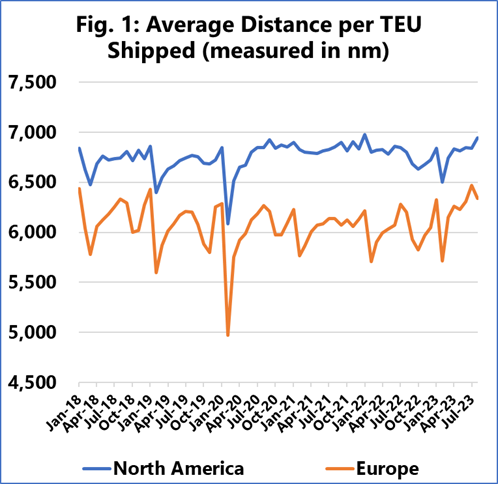As pandemic-related congestion reached record highs, the concept of nearshoring was consistently proposed as a possible panacea for future similar events.
However, the post-pandemic statistics do not support the notion.
Nearshoring sees production brought closer to the consumers, which is contrary to the strong trend of production offshoring seen over the previous decades.
But Maritime consultancy Sea-Intelligence contends that data does not support an increase in the trend.
CEO Alan Murphy points out that a side effect of nearshoring would be a shortening of supply chains as some production would move closer to the end-consumer, but not so close as to fully eliminate the need for container shipments. This should therefore show up as a reduction in the average sailing distances.

Figure 1 shows the average sailing distances of containers imported into North America and Europe. “The large downward spikes are seasonally caused by Chinese New Year and Golden Week,” says Murphy. “For North America, we see that the sailing distance has increased compared to a pre-pandemic baseline, hence giving no support to the notion of nearshoring. For imports into Europe, although a marginal decline can be seen early in the pandemic period, this has been reversed and it would be more correct to conclude that over the past year, there has been a gradual increase in the sailing distance for cargo coming into Europe.”
In addition, when analysing container trade volume data from Container Trade Statistics, intra-Europe container volumes, as a share of total European container imports, have been gradually declining since the height of the pandemic.
And while only a small share of intra-North America cargo moves on container vessels, intra-North America container volumes, as a share of total North America container imports, have almost halved since the pre-pandemic, from an average of 1.2% in 2019 to 0.6% in 2023 YTD.
“In conclusion,” says Murphy, “the available container volume trade data does not support the notion of increasing nearshoring.”













